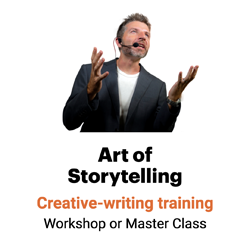Find the inciting incident
First things first.

Start your story with the inciting incident — the conflict that begins the action of the story and causes the hero to act.
Think of the inciting incident as the discovery of the corpse that begins every episode of “Law & Order.” Elizabeth George’s For the Sake of Elena, for instance, starts like this:
“Mercifully, the arm was attached to a body.”
Without this event, there would be no story.
Three tricks for starting with the inciting incident:
1. Find the ‘desk-pounding moment.’
When you’re interviewing for a narrative, look for the “desk-pounding moment.”
That, according to Ragan Communications editor David Murray, “is the moment when somebody pounded on his or her desk and said, ‘Damn it, we’ve got to do something about this.’
“That moment is the origin of every corporate program. … The closer you as a reporter get to the very moment the idea was hatched by a human being, the better your story is going to be.”
2. Begin as close to the action as possible.
“Come in late and get out early.”
— David Mamet, Tony-nominated playwright of Glengarry Glen Ross
A participant in one of my storytelling workshops once shared this advice:
“If you’re writing about seeing a snake at a picnic, for gosh sake, start with the snake. Don’t start with fixing the sandwiches.”
The conflict — the snake — is the inciting moment.
So start in the middle of things, at the most dramatic moment of the conflict:
- The day the tax bill came
- The day the bank called your loan
- The day the company shipped its $60,000 circuit board with a fatal flaw
3. Skip the background information.
And of course, don’t include 40 paragraphs of background information before something actually happens. Do that, and readers won’t stick around long enough to get to the inciting incident.
___
Sources: Ann Wylie, The Art of the Storyteller, Wylie Communications Inc., 2003
David Murray, “Writing Between the Lines: How to tell good news well: Separate the meat from the fluff,” Corporate Writer & Editor, July 1, 2003

I haven’t heard of “start with the snake” but I always tell writers to start with putting the readers at the top of the slide & write the whole piece so they get to the bottom of it rapidly, without stopping, without noticing the time it took. Similar idea.
Thank you, Gloria. What techniques do you do to do that?